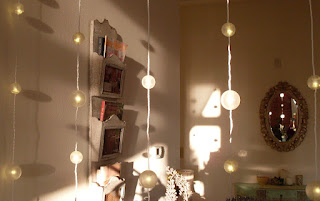When I think of ‘Spirit’, I think of an effervescent energy that emanates from all living things. It hovers within and around the physical form while extending infinitely beyond it, and is in fact not dependent on it. It can appear that some people have Great Spirit, presence or lust for life, and they may in fact be more in touch with the energies they possess and their own positive manifestations. Thus the more they pay attention to the beauty and potential goodness of the world, the more their spirit is fed.
When I think of spirit I think of many things, including the contagious energies of determination, enthusiasm and resilience, people who’ve passed away and their higher selves that seem to remain, and just about anything that is growing or evolving. As an animal lover, for instance, I’ve watched my pets come to life over the years, to the extent that they seem to become nearly as human as the rest of us. I assume it is their evolution or awakening of spirit. The more I pay attention to them in a kind, caring way, the more they connect with me and others, and the more they come to life in subtle but significant ways. I think it’s the same from person to person. The spirit is always there, but we often have to dig to uncover and fully discover it.
Stephen defines spirit as “The sense of panoramic awareness and spaciousness.” Panoramic awareness is a knowing that is energetic; it has its own life to it. Spaciousness is openness, formlessness, a sense of unobstructed space and the ability to move through it. Being intangible, however, both awareness and spaciousness can be hard to pin down, making it easy for us to go to the” shadow side”, in which we may act as a perfectionist, doubter, seeker or wanderer.
Seekers and wanderers are always looking for things outside of themselves, and yet they have a lot of doubt about themselves and the journey. Since they also have perfectionist tendencies, nothing is ever good enough, causing self-confidence issues and endless searching. (See the cycle?). Always having two poles or opposites, shadows can pull at each other and leave us feeling trapped within.
The healthy balance of Spirit, on the other hand, comes from embodying the forms of guide and student rather than doubter and seeker. We can do this by being open to the lessons at hand, accepting and utilizing wisdom that shows itself, and knowing that life is not a monkey wrench-free ride. Since none of us is completely lacking of the shadow sides, we must be willing to be a student and we need a good guide when it comes to residing in the “spirit world” (which is not as bewitching or otherworldly as we think; we often do this without necessarily realizing it). While the space has no form or color and can be hard to see, moving through it is not as predictable or linear as we expect. Like walking through a mansion’s rooms without seeing the blueprint of the whole structure, the exploration can be scary without the awareness of the larger picture and some guidance along the way.
So how do we go about getting this? Considering what the big picture really is and what it means to us; Being open to spiritual or spirit-driven teachers or mentors who help us make sense of things; Making our mental and emotional well-being as important as anything else in our lives; And encouraging others to do the same. Because by including spirit in our healing – integrating with a higher spirit and allowing our spirits to heal – we are engaging the full healing model and all aspects of ourselves.
“When you get the warm, familiar feeling of being home,” Stephen says, “you’ll know you’re not wandering and doubting anymore.” Being in spirit is being in the center of the labyrinth of life: You are operating from a more stable place, you have a healthier perspective and outlook, and you as well become the guide.



